This was published 1 year ago
The one destination no traveller can ever be fully prepared for
My to-do list to become Antarctica-ready is long. Topping it is completing a medical form confirming I’m fit to travel to the remote White Continent.
“You don’t think I’m just going to sign this, do you? You’re over 50 – anything could happen,” says my GP, before ordering a blood test and an ECG to check for different heart conditions.
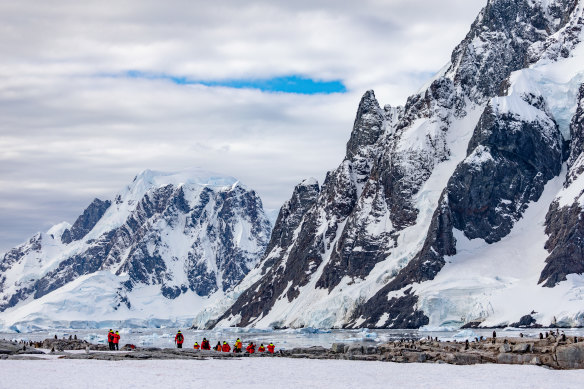
Nothing quite prepares you for Antarctica.
I pass the tests with flying colours, but she’s right about one thing: something unexpected does happen. There’s no inkling, though, when I land in Buenos Aires, Argentina, practically fizzing with excitement. I’m focused on finding tango, a glass of malbec and a mouth-watering steak before peeling myself out of bed at 2.30am to make the early morning charter flight 3000 kilometres south to Ushuaia, the world’s southernmost city.
As Argentina’s pancake-flat pampas crumples and fractures into the snow-capped peaks and sparkling fjords that make the Tierra del Fuego archipelago so picture-perfect, any fatigue from the short night’s sleep evaporates. Descending into Ushuaia, we spot the dock where our expedition ship, HX’s hybrid-powered MS Fridtjof Nansen, is preparing for our arrival.
We cool our heels beforehand, visiting nearby Tierra del Fuego National Park and the End of the World Post Office perched on a short rickety pier. So many people are crammed into the shanty – Australia Post should be so lucky – that I don’t linger as I’m planning to send postcards from Antarctica’s Penguin Post Office.
Our jaunt includes inspecting a beaver dam and a glimpse of a curious Arctic fox. It only whets the appetite for more wildlife.
At last, we board and glide away from frosty Ushuaia down the Beagle Channel. Swaddled in my warmest gear, I head to the deck to sip a pink cocktail. Raising it to the afternoon sun, I toast to looking at the world anew through rose-coloured glasses.
By next morning, those glasses have slipped right off, thanks to the “Drake shake”. The swell’s up on the Drake Passage – one of the world’s roughest ocean crossings – pinning me to the bed. I’m blissfully unaware I’m missing the mandatory safety briefing for sea-kayaking (rookie mistake – and if I ever get a second chance, I’d apply an anti-nausea patch before setting sail).
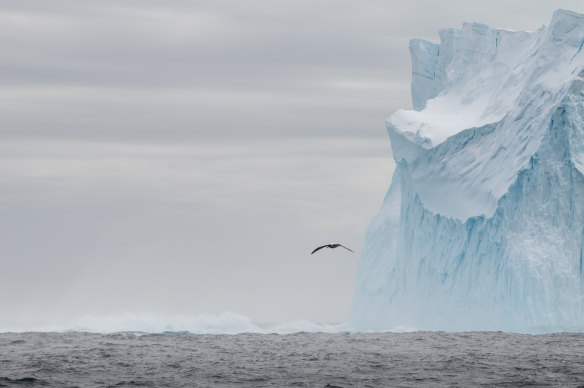
Icebergs shimmer into view.
The sea mellows on day two; icebergs shimmer into view. Distant white blobs don’t make great photos but I can’t help snapping away. Soon enough, icebergs appear more frequently and at closer range; only the most spectacular are immortalised in pixels. On board, the 335 passengers are organised into animal groups to facilitate Zodiac shore transfers. I become a Cape petrel, a common seabird in these parts that has a fondness for following ships.
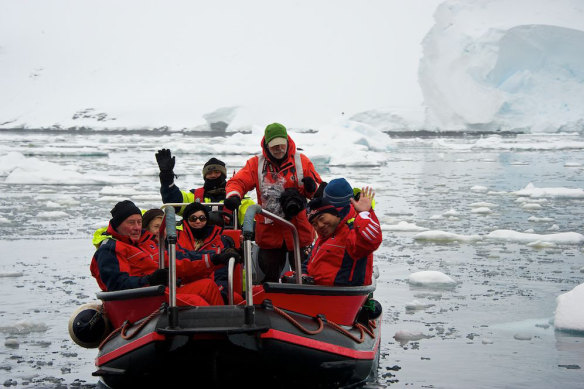
Zodiacs carry passengers for their first experience on Antarctic ice.
By the time we reach Brown Station on the Antarctic Peninsula, I’ve adapted to nature’s rhythms here. It’s still twilight when we hit the sack but our cabins’ blackout curtains (cleverly edged with magnets) make it easier for us to fall asleep, and help the ship avoid bird strikes.
Brown, an Argentinian research station, is unoccupied when we visit early in the cruising season, but it has a fascinating history. In 1984, the station’s doctor was ordered to stay on for the winter. To say he was unhappy is an understatement – he torched the original facilities and station personnel were duly rescued.
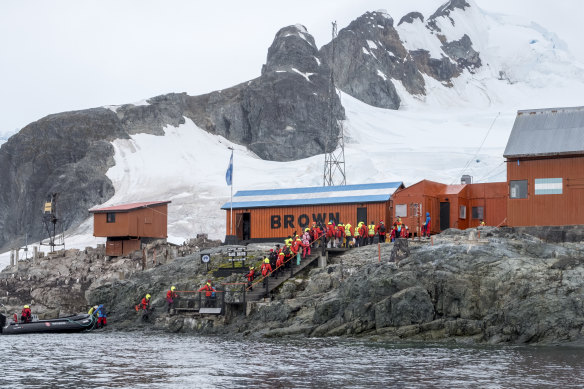
Guests step inside Brown, an Argentine Antarctic research station.
Unlike the bad doctor, we can’t wait to step ashore at this stunning spot in aptly named Paradise Bay. The Nansen’s expedition team has pegged a path for us to follow. It’s a steep scramble up the first few steps hacked into the snow, but using two trekking poles helps keep me upright. When I reconvene with fellow Cape petrels (after pausing at a penguin “highway” to allow the waddling birds right of way), most of us are emotional and a little teary that we’ve stepped onto our seventh continent.
Gentoo penguins have gathered here to build their pebble nests and breed – but it’s too early to see chicks or experience the pungent smell of penguin poo that late-season cruisers often mention. Two crabeater seals laze in the distance. Some lucky passengers camp overnight on a small offshore island (tip: if you’re keen but relegated to the waiting list, complete the safety briefing in case there’s a last-minute drop-out).
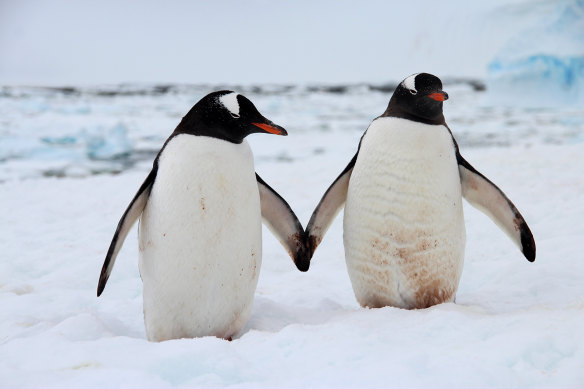
Gentoo penguins on Cuverville Island.
The next day brings our final landing – although we don’t know this yet. The Cape petrels, last to go ashore yesterday, are first to reach Petermann Island in the Wilhelm Archipelago. Tramping through cotton-ball snow, I wonder if early explorers ever felt overwhelmed by the beauty. My gloves stay stuffed in my pocket on this sunshiny day (I felt colder back in Ushuaia). Penguins are belly-sliding along their thoroughfares, feeding and fornicating (who wouldn’t want to be a penguin in November?).
Mostly, we see gentoos, although several Adelies, Antarctica’s littlest penguin species, lurk too. As we return to the ship, penguins porpoise through the water alongside us, demonstrating their astonishing speed in their natural environment. “I don’t ever want to go to a zoo again,” says a passenger, voicing my thoughts.
With pack ice preventing a third-day shore landing, I join a science-boat outing to collect water samples and see the Secchi disk water-visibility technique in action. Port Lockroy’s Penguin Post Office team also boards the ship to talk about life at their base and to sell souvenirs.
It’s still a sensational day. We’ve slid right past icebergs with electric-blue innards (the disco colour is the result of air bubbles, which can interfere with the passage of light, being squeezed out of dense ice).
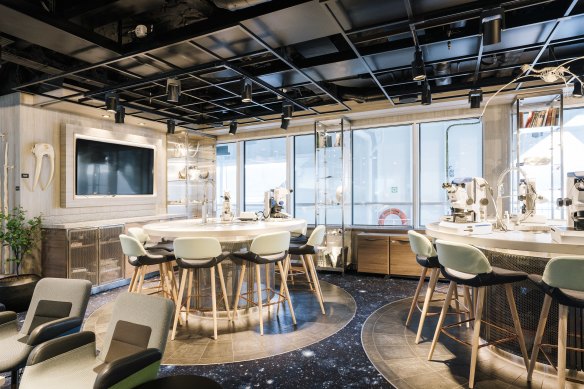
HX’s onboard Science and Education Centre.
Throughout our journey, passengers gravitate to the MS Fridtjof Nansen’s Science Centre.
Geeking-out here takes many forms, from peering into microscopes to examine water samples for tiny phytoplankton to chatting to the multidisciplinary science team members aboard the ship.
My journey includes an Australian expert on marine mammals, Connor McGarry, who grew up watching migrating whales from his family’s balcony near Busselton, Western Australia. “Being in a small community, you’d see blows and ring your neighbours,” he says.
Between giving lectures for passengers, he also collects data on the abundance, distribution and behaviour of ice-loving seals – Weddell, crabeater and leopard – while noting their surrounding ice conditions. This, he says, will help scientists understand how seal populations and their distribution might change or overlap as sea ice inevitably changes.
Passengers can also take a squiz at a wildlife list pinned to the wall to see what animal and bird species have been clocked during their journey and inspect “green stay” and food-waste charts that document daily on-board sustainability efforts.
For each day that a passenger declines housekeeping services, 50 euro cents is donated to the Hurtigruten Foundation. These funds have supported organisations with projects ranging from restoring Norwegian sea-kelp forests and refurbishing a Greenland museum to using AI for whale science interpretation.
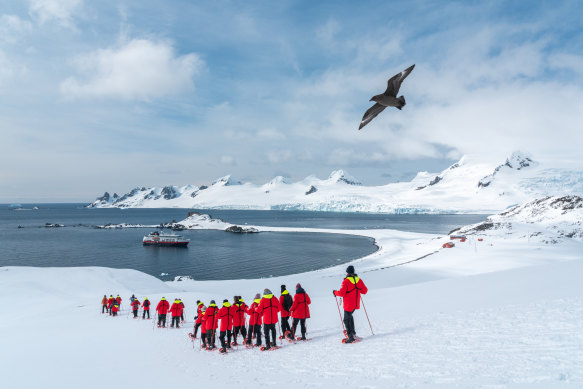
Wildlife bingo… a southern giant petrel glides above guests.
Our ship’s hotel manager, Gabriela Murara da Rocha, says green-stay numbers rise on rough sea days and sea days towards each cruise’s end when passengers are tired. Food waste calculation takes into account both excess production from the kitchen and leftovers from plates – which is higher on nights when there’s a buffet for dinner.
From my dining room window seat that night, I’m hypnotised by the Lemaire Channel’s silky waters, ruffling like silver taffeta in our wake.
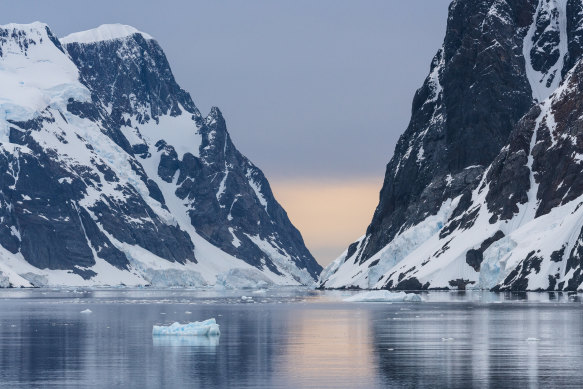
Savour every moment in Antarctica.
Suddenly, dinner’s interrupted: a surprise announcement crackles through the loudspeakers. Due to an onboard medical emergency, we’re returning immediately to Ushuaia. Antarctica is unpredictable - the human body even more so - yet it’s a disappointment. Some of us will never step foot on the continent again.
In a daze, we drift to the open deck, where nature heaps consolation prizes upon us. Orcas are frolicking among the ice floes, as if to bid us farewell, and the White Continent is completely coloured-in thanks to a sunset that doesn’t know the meaning of restraint.
THE DETAILS
Cruise
HX’s 12-day Highlights of Antarctica trip, which includes charter flights between Ushuaia and Buenos Aires, and a pre-trip hotel night in BA, starts from $9655 a person twin-share. Longer Antarctica itineraries are also available. HX’s polar-class ships, MS Fridtjof Nansen and MS Roald Amundsen, are near-identical. Antarctica’s cruising season runs from November to March. See HXexpeditions.com
Fly
LATAM and Qantas fly from Sydney and Melbourne to Santiago, Chile (some flights travel via Auckland, so you might mix and match airlines). LATAM offers frequent onward connections to Buenos Aires, Argentina. See latam.com, qantas.com
Download
While cruising Antarctica, it’s rare to see other expedition vessels – but the MarineTraffic app will reveal you’re aboard one of many ships exploring the continent.
The writer travelled as a guest of HX (formerly Hurtigruten Expeditions).
Sign up for the Traveller Deals newsletter
Get exclusive travel deals delivered straight to your inbox. Sign up now.